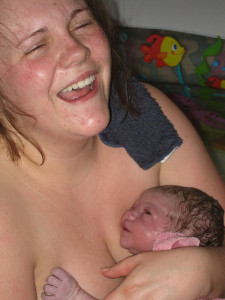Labour Pain: A Woman’s Rite Of Passage To Motherhood
 Pain in childbirth is a universal physiological phenomenon intricately associated with the socio-cultural and religious beliefs of women. Christians has always viewed labour pain as the curse of Eve, or ‘part of God’s plan,’ but when Queen Victoria was administered with chloroform when she gave birth to her child in 1853, only then the use of analgesia, or pain relief in labour and birth had become acceptable in our culture.
Pain in childbirth is a universal physiological phenomenon intricately associated with the socio-cultural and religious beliefs of women. Christians has always viewed labour pain as the curse of Eve, or ‘part of God’s plan,’ but when Queen Victoria was administered with chloroform when she gave birth to her child in 1853, only then the use of analgesia, or pain relief in labour and birth had become acceptable in our culture.
Fear of pain in labour and giving birth is common among expectant mothers due to the kind of culture we have been brought up in. The apparent accessibility of analgesia can play a major role in strengthening the medical impression that a woman’s anatomy is inherently flawed and without these drugs and other technological aid, a woman won’t be able to give birth. Our low tolerance of pain, both for ourselves and those around us, also reinforce this notion culturally.
Different measures of pain control has become a norm in birth rooms today like the use of pain-relieving drugs such as Pethidine, Epidurals and Nitrous Oxide gas. Statistics show that in 1996, at least one of these drugs had been used in labour by more than 80% of Australian women, specifically in Queensland.
Although pain relief is advantageous in most cases, it is fascinating to think that the degree of pain relief is unrelated to a woman’s joy in her childbirth experience. For instance, there are some women who felt frustrated when they were unable to push their baby out after an Epidural while others felt uncoordinated and vague after a Pethidine.
Not only that, Analgesia can bring about other complications to the mother and the baby. Pethidine can make a newborn drowsy for several days which can affect breastfeeding. On the other hand, Epidural can give a mother, particularly first-time mothers, a higher chance of needing to give birth with the use of forceps or caesarian section. In relation, an astonishing Scandinavian study associates exposure to drugs at birth is related to a higher risk of drug addiction is adulthood.
Research studies of hormones present during childbirth suggests that labour pain may play an important role in preparing the mother for breastfeeding and bonding. The body’s natural pain and stress fighter, Endorphins, conceives a modified state of awareness that allows a woman to battle with labor pain. This natural opiate can also stimulate the release of prolactin, a hormone that activates breast-milk production.
Another hormone that plays a major role in childbirth is Oxytocin. It specifically stimulates muscle contraction in the uterus and reaches peak levels during childbirth. This hormone is believed to be an important element in mother-baby bonding and post-birth euphoria. However, the use of Epidural can reduce Oxytocin levels in women on natural birth or by caesarian section.
Nowadays, a variety of resources on how to avoid pain-killing drugs is made available to women in labour. The most extensive, yet the simplest tools are the use of relaxation and breathing techniques, as well as the use of different movements and positions. Yoga, dance and active birth classes are the means in which a lot of women have become familiar to these resources.
Another remarkable way that can dramatically reduce the need for using pain-killing drugs is through a continuous care with your midwife or trained childbirth helper, doula. Low-technology models such as birth centres or home births and being with our trusted birth helpers can lower the chances of using analgesia and at the same time build up our confidence in our bodies.
Continuous care with your own midwife or doula (trained childbirth helper) has been shown to dramatically reduce the need for analgesia. Women who use a low-technology model of care, such as a birth centre or home birth also use less pain-killing drugs. Choosing birth helpers who have confidence in us helps us to trust our bodies in our ability to cope with the pain of childbirth.
Other non-drug modalities that can also be used in most birth settings aside from the self-confidence and trust in our primary and trusted resources such as acupuncture, aromatherapy, massage, homeopathy, reflexology, and TENS machines.
Childbirth is a woman’s rite of passage to motherhood, a one-of-a-kind experience which gives us an amazing idea on the power and resiliency of a woman’s body, as well as confidence in our capacity to nurture a newborn. It hurts to give birth, but just like an athlete who endures until crossing the finishing line, a woman patiently suffers and bravely faces the risk of and pains of childbirth. Anyways, our babies and our culture will be commended when motherhood was faced with such strength and confidence.
Image: https://www.flickr.com/photos/vestfamily/